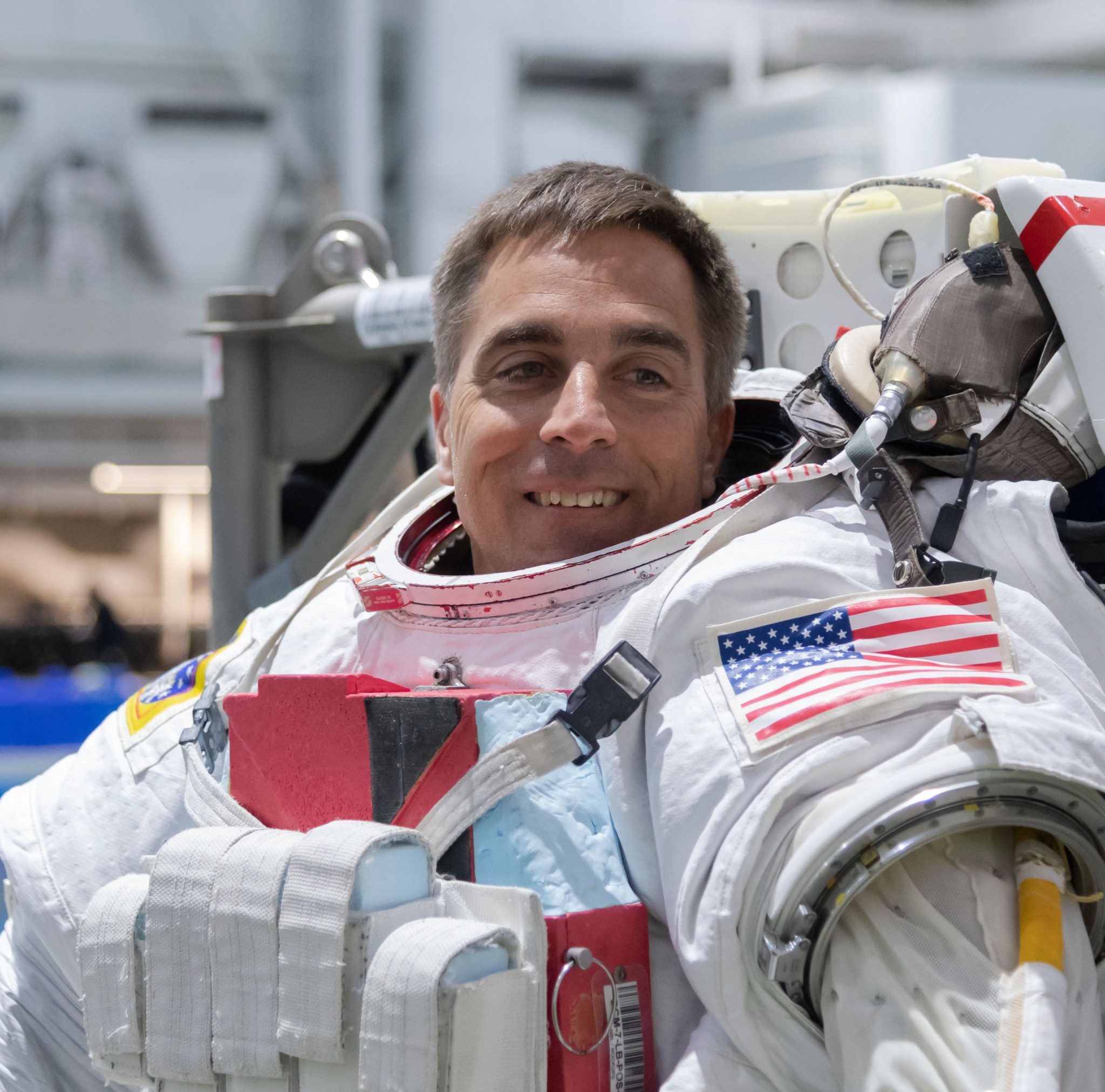NASA astronaut Chris Cassidy will be available for live satellite interviews from 7 to 8:30 a.m. EDT Thursday, March 19, before launching on a six-and-a-half month mission aboard the International Space Station.
The interviews will originate from the Gagarin Cosmonaut Training Center in Star City, Russia, and will air live on NASA Television and the agency’s website, preceded by video of Cassidy’s training, which will air at 6:30 a.m.
To interview Cassidy, media must contact Sarah Volkman no later than 5 p.m. Tuesday, March 17, at 281-483-9071 or sarah.e.volkman@nasa.gov. Media participating in the interviews must tune to the NASA TV Media Channel (NTV-3). Satellite tuning information is available at:
Cassidy and his Expedition 63 crewmates, Roscosmos cosmonauts Anatoly Ivanishin and Ivan Vagner, are scheduled to launch April 9 aboard the Soyuz MS-16 spacecraft. This will be the first crewed flight using a Soyuz 2.1a booster from launch site 31 at Russia’s Baikonur Cosmodrome in Kazakhstan.
They will arrive at the space station after a four-orbit, six-hour journey and join NASA astronauts Jessica Meir and Andrew Morgan and Expedition 62 commander Oleg Skripochka of Roscosmos. Cassidy will become commander of Expedition 63 when Meir, Morgan and Skripochka return home to Earth.
During Expedition 63, Cassidy and his crewmates will support about 250 research experiments not possible on Earth. These pursuits broaden knowledge of Earth, space, physical and biological sciences in ways that benefit everyday lives. They will help enable long-duration exploration into deep space for future Artemis missions to the Moon and eventually on to Mars.
This will be the third spaceflight for Cassidy, who considers York, Maine, to be his hometown. He earned a bachelor’s degree in mathematics from the U.S. Naval Academy and a master’s degree in ocean engineering from Massachusetts Institute of Technology. Before NASA selected him as an astronaut in 2004, he spent 11 years as a member of the U.S. Navy SEAL Team and deployed to the Afghanistan region two weeks after the Sept. 11, 2001, terrorist attacks. He achieved the rank of Navy captain in 2014 and remains on active duty.
Cassidy’s first spaceflight was as a mission specialist aboard space shuttle Endeavour for the STS-127 mission in 2009, when he became the 500th person to fly in space. During the 16-day mission, Cassidy participated in three spacewalks to help install the Japanese Kibo laboratory’s exposed facility and replace solar array batteries on the Port 6 truss of the space station.
His first long-duration mission was in 2013 as part of Expeditions 35 and 36. He took part in three more spacewalks during his six-month stay. He has spent 182 days in space, and 31 hours and 14 minutes spacewalking.
This is the third spaceflight for Ivanishin and the first for Vagner.
For almost 20 years, humans have lived and worked continuously aboard the International Space Station, advancing scientific knowledge and demonstrating new technologies, making research breakthroughs not possible on Earth that will enable long-duration human and robotic exploration into deep space. As a global endeavor, 239 people from 19 countries have visited the unique microgravity laboratory that has hosted more than 2,800 research investigations from researchers in 108 countries.
Download b-roll and additional video content at:
Follow Cassidy on social media at:
Get breaking news, images and features from the space station on Instagram, Facebook, and Twitter.
-end-
Stephanie Schierholz
Headquarters, Washington
202-358-1100
stephanie.schierholz@nasa.gov
Brandi Dean / Jennifer Hernandez
Johnson Space Center, Houston
281-483-5111
brandi.k.dean@nasa.gov / jennifer.hernandez-1@nasa.gov



























